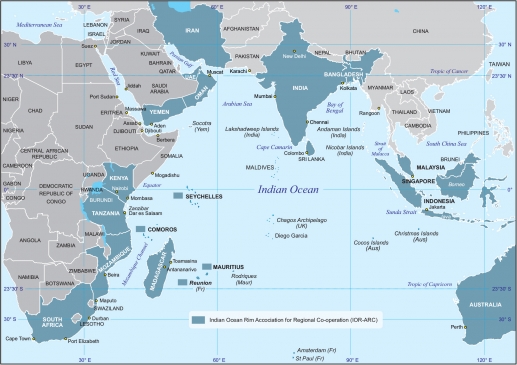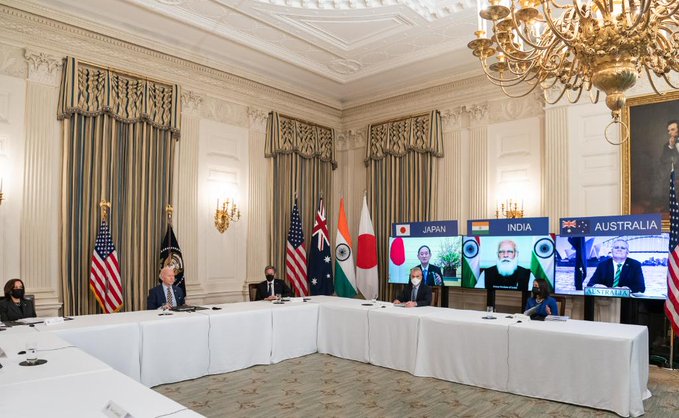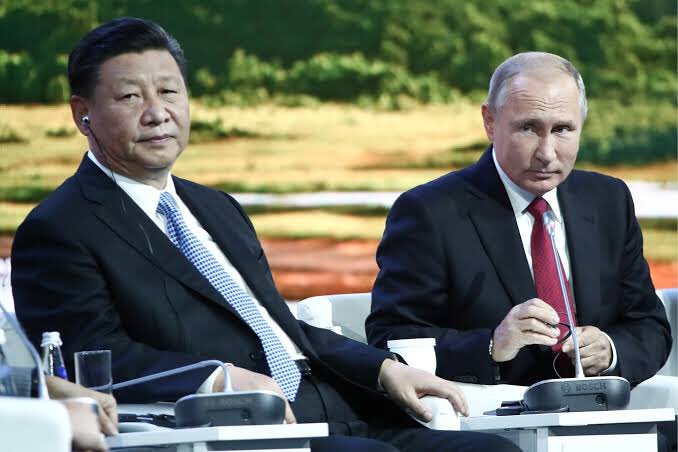There is no doubt that the Biden team came to power comprised of several viciously anti-Indian (or anti-Hindu as Britophils prefer to say) elements. The smartest & the most committed of them are the privileged “white” Judeo-Christian left.
- First they sidelined much of the progress made by Asian Americans by declaring them outside of their new “under-represented” minorities designation (sure & we all see how rich jobs in NBA, NFL, NCAA are dominated by Asian).
- Then they went at the religious-cultural ethos of Asia by trying to declare the Svastik as a modern Hitlerian hate symbol.
- While all this was going on, there were active attempts by these smart anti-Modi left-wingers to subvert the Indian state so much so that the Indian Government was compelled to restrict the freedoms overseas Indians enjoyed in their country of origin.
These steps of the broad Biden coalition and the unease they created in the Indian establishment played a non-insignificant role, in our opinion, in India’s decision to come to a partial agreement with China in Ladakh & a cease-fire type arrangement with NaPakistan.
At the same time, reality struck the smart echelon of the Biden team. That their success or failure will depend on how they handle China. The next four years will tell the world whether America still remains the top power or whether China reaches parity with America. And USA is ill-equipped today to handle China in the Indo-Pacific just as USA was ill-equipped to handle Germany in Europe before WWII.
How ill-equipped? The American Navy sits on the outskirts of this vast Indo-Pacific region – in Japan in the west & in Bahrain-UAE in the East. Look at how isolated that is in the map below. The US has no allies, no partners & no bases in this enormous expanse that touches the Middle East. Eastern Coast of Africa, South eastern Asia and even western Australia.
Just think, this large, wide & critical region of countries has NO collective maritime security arrangement at least not since WWII. Now add naval routes & choke points to the above map to understand why such a collective security arrangement is critical:
Look at the map above to understand why control of India enabled the British Navy to “rule the waves” & why Britain became a global empire. Now you will understand why Mr. George Nathaniel Curzon, British viceroy of India from 1899 to 1905, considered the Indian subcontinent as being at the center of global geopolitics.
Today there is virtually zero chance for America to put down its own stakes in this critical region. First the costs would be prohibitive. Secondly with the tag of unreliability of US politics & the wide swings in US policy, there is virtually no country that would unilaterally side with USA against China in this center of the Indian Ocean.
Not unilaterally but perhaps as a member of a collective group of like-minded nations? Read what Robert Kaplan wrote in August 2012 in his article India’s Riveting Centrality:
- “India stands astride the Indian Ocean, creating with its inverted triangular shape the Arabian Sea and the Bay of Bengal, which are respectively the maritime organizing principles of the Middle East and Southeast Asia. As for the Indian Ocean, it is the world’s energy interstate, the link for megaships carrying hydrocarbons from the Middle East to the consumers in the burgeoning middle-class concentrations of East Asia. India, thus, with the help of the Indian Ocean, fuses the geopolitics of the Greater Middle East with the geopolitics of East Asia — creating an increasingly unified and organic geography of conflict and competition across the navigable southern rim of Eurasia.”
America already had allies in the far east in Japan & Australia. But these allies themselves depend on the world’s energy interstate. Hence Japan, under PM Shizo Abe, was the first to build a long term relationship with India. Australia was sort of compelled by a hegemonic China. American scholars began looking at India almost 10 years ago. Read what Kaplan wrote in his August 2012 article:
- “For as the United States and China become great power rivals, the direction in which India tilts could determine the course of geopolitics in Eurasia in the 21st century. India, in other words, looms as the ultimate pivot state. … It is not a matter of what India can do for the United States. Rather, it is the very fact that India‘s rise, militarily and economically, automatically balances against China because of India‘s proximate position on the map. Thus, the rise of India, however uneven and admittedly over-hyped, has been the best piece of strategic good luck the United States has had since the end of the Cold War.”
And America’s second piece of strategic good luck was the utterly asinine conflict launched by China in India’s Ladakh in May-June 2020. It forced India to launch a massive mobilization that included putting tank regiments on Himalyan peaks overlooking Chinese positions; launching round the clock patrols by fighters over the long border & large scale naval exercises near the Malacca straits. The United States itself galvanized its support of India in terms of key equipment & sophisticated intelligence. The two navies conducted joint naval exercises in the Indian Ocean joined by Japanese ships. The US-Indo defense partnership seemed on its way.
Then came the political swing in America and the potential distancing of India because of some elements of the Biden coalition. This week that seemingly was put to bed and the Biden Administration committed itself to the QUAD – the 4-member group of America, Australia India & Japan (in alphabetical correctness):
- The White House@WhiteHouse – United States government organization – This morning, President Biden hosted his first multilateral summit as president. During the meeting with the Quad, the President and leaders of Japan, India, and Australia recommitted to working together to secure a free and open Indo-Pacific region.
In his post-summit briefing Jake Sullivan, President Biden’s National Security Advisor, quoted President Biden’s “belief in the centrality of the Indo-Pacific in national security of the United States” and said
- “The Quad, at the end of the day, at the end of today, is now a critical part of the architecture of the Indo-Pacific.”
This is not just a naval or military architecture. Witness what Ned Davis, a State Department Spokesperson, said three days ago about Tibet, China’s vulnerable underbelly:
- Ned Price@StateDeptSpox – United States government official – Mar 10 – As I shared yesterday, Beijing must not interfere in the succession of Tibetan Buddhist religious leaders, including the Dalai Lama. Any attempt to do so – as the PRC has already done with the Panchen Lama – is an outrageous abuse of religious freedom.
Other non-Asian countries have shown some interest in joining the Quad. Britain has already stated that they would consider joining the Quad when the collective group begins to open up to new members. We don’t want to run ahead of reality but it is indeed possible to imagine the possibility that the Quad may become a broad collective grouping of democratic nations committed to free & open navigation & trade.
Who may not be happy about the Quad coming of age?
- Yusuf Unjhawala@YusufDFI – Mar 12 – Putin: What do you think they are talking about Xi: Definitely not about Russia. They are after China Putin: Damn! I miss the last century when we were the topic of discussion. #QuadSummit



